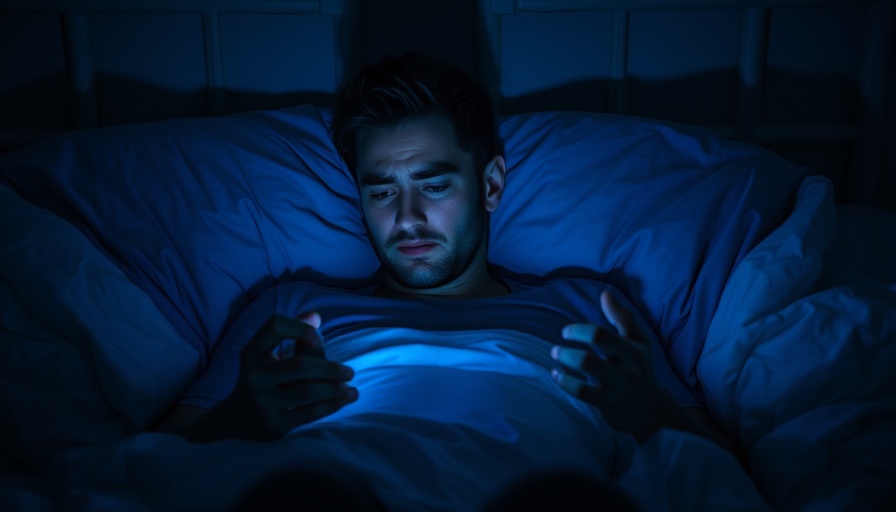
The Science Behind Blue Light and Sleep Disruption
With screens becoming an integral part of daily life, many have questioned how blue light emitted from devices impacts our sleep. Recent studies have shown that exposure to blue light before bedtime can inhibit the production of melatonin, the hormone responsible for regulating sleep cycles. This disruption can make it difficult to fall asleep and can lead to poorer overall sleep quality.
Why This Matters: Sleep's Impact on Health
Understanding the relationship between blue light exposure and sleep is critical, as poor sleep quality is linked to various health conditions, including depression, anxiety, and obesity. A significant amount of research indicates that sleep is vital for cognitive function, emotional balance, and physical health. Hence, managing blue light exposure particularly in the evening becomes increasingly important.
Practical Tips for Reducing Blue Light Exposure
Fortunately, there are actionable steps individuals can take to mitigate blue light's effects. One effective way to reduce exposure is to utilize blue light blocking glasses, which filter out harmful light wavelengths. Additionally, implementing screen time limits an hour before bedtime can help promote healthier sleep patterns. Finally, many devices now offer settings to adjust display brightness and hue, allowing users to minimize blue light exposure during the evening hours.
Counterarguments: The Other Side of the Spectrum
While much focus is placed on the adverse effects of blue light, it is essential to consider that blue light can also have benefits. For instance, natural daylight, which is rich in blue light, can enhance alertness and cognitive function during the day. Experts argue that rather than completely eliminating exposure, individuals should strive for a balanced approach, ensuring ample daylight exposure in the morning to help regulate the body's natural rhythms.
Future Predictions: The Role of Technology in Sleep Health
As technology continues to evolve, the related implications for sleep health will likely grow. Innovations such as wearable sleep trackers and smart home devices could offer individuals insights into their sleep patterns influenced by blue light. These advancements promise to provide users with real-time data to make informed decisions about their environment and technology use, ultimately supporting better sleep health.
Concluding Thoughts: Take Control of Your Sleep Environment
In light of the evidence linking blue light exposure to sleep disruption, it is crucial for individuals to take control of their sleep environments. By implementing strategies to reduce blue light exposure and being mindful of screen time before bed, people can cultivate a healthier relationship with technology while supporting their overall wellness. Staying informed and proactive is the first step toward improving sleep quality and, by extension, overall health.
 Add Row
Add Row  Add
Add 




Write A Comment